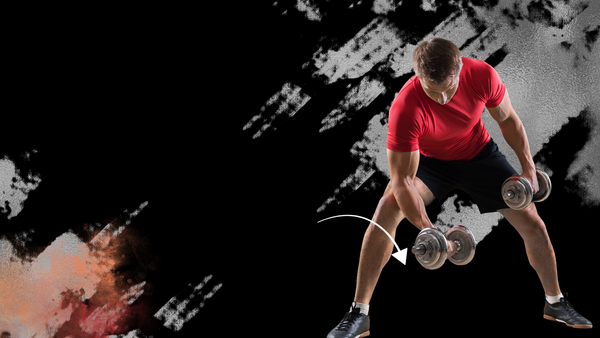How to Treat a Blood Blister: Easy Home Remedies
Discover effective home remedies to treat a blood blister safely. Learn prevention tips, when to seek medical help, and natural ways to speed up healing at home.

https://www.youtube.com/watch?v=OtowM2SHotE
Blood blisters can really hurt and make it hard to do everyday things. About 20% of people get blisters from rubbing, and blood blisters are the worst. Knowing how to treat them is key to feeling better fast.
A blood blister happens when blood vessels under the skin get hurt. This creates a bubble filled with blood. Activities like running or hiking can cause this because of rubbing. Proper treatment can lessen pain and stop bigger problems.
Usually, blood blisters heal on their own in 3 to 7 days. But people with diabetes or circulation issues need to be extra careful. Quick action and prevention can make healing faster and less painful.
Finding the best treatment means knowing why the blister happened and using the right home remedies. Using moleskin can cut down blister risk by half. So, prevention is a big part of managing blisters.
This guide will show you how to treat blood blisters. You'll learn how to handle these painful spots with confidence and care.
Understanding Blood Blisters and Their Causes
Blood blisters are unique skin injuries. They happen when small blood vessels under the skin get damaged. These painful formations occur in various situations, creating fluid-filled pockets.
What Causes Blood Blisters to Form
Blood blisters can form from many causes. Common triggers include:
- Intense physical friction from repetitive movements
- Pinching or crushing injuries
- Wearing improperly fitted shoes or equipment
- Heavy manual labor without protective gear
- Sudden impact or compression
Your risk increases when doing activities like weight lifting or endurance sports without proper protection.
Common Locations for Blood Blisters
| Body Region | Likelihood of Blood Blister Formation |
|---|---|
| Hands | High |
| Feet | Very High |
| Fingers | High |
| Joints | Moderate |
| Mouth | Low |
Signs and Symptoms to Watch For
Blood blister symptoms can vary but typically include:
- Raised, fluid-filled pocket with a dark red or purplish appearance
- Localized pain or tenderness
- Potential swelling around the affected area
- Sensitivity to touch or pressure
Most blood blisters heal on their own in 1-2 weeks. But, you might need medical help if they don't heal or show signs of infection.
Safe Methods for Blood Blister Treatment
Taking care of blood blisters is important. They usually heal in one to two weeks. Knowing how to manage them can help them heal faster and avoid problems.
Here are key steps to follow:
- Keep the blister intact to protect against infection
- Use protective bandages to cushion the affected area
- Avoid unnecessary friction or pressure
- Monitor for signs of potential infection
If you're thinking about draining a blood blister, get professional advice. Improper drainage can lead to infections and delayed healing. If the blister is big or very painful, see a doctor. They can drain it safely with clean tools.
Look out for signs of infection:
- Intense pain
- Increased redness
- Warmth around the blister
- Pus formation
- Fever
People with health issues like diabetes or weak immune systems need to be extra careful. If a blood blister appears, get medical help right away.
Preventing blood blisters is the best strategy. Wear shoes that fit well, use socks that wick away moisture, and avoid rubbing to lower the risk of getting a blood blister.
Essential Home Remedies and Prevention Tips
Dealing with blood blisters needs careful attention and smart home remedies. Knowing the right steps can help heal faster and avoid problems.
Natural Healing Solutions
Several natural methods can help with blood blisters. These home remedies can reduce swelling and speed up healing:
- Aloe vera gel to soothe skin and reduce inflammation
- Cold green tea compresses for natural pain relief
- Ice packs to minimize swelling and discomfort
- Petroleum jelly for protecting the blister and maintaining moisture
Protective Measures and Bandaging
Preventing blood blisters is important. Taking the right steps can lower the chance of getting them:
- Wear properly fitting shoes to minimize friction
- Use protective gear during manual labor
- Apply anti-chafing creams in high-friction areas
- Choose moisture-wicking socks for physical activities
When to Apply Natural Remedies
Using home remedies correctly is key for healing. Always clean the blister and area first. Avoid popping the blister, as it can lead to infection.
| Remedy | Benefits | Application |
|---|---|---|
| Calendula | Anti-inflammatory properties | Gently apply cream 2-3 times daily |
| Coconut Oil | Promotes healing | Massage lightly around blister |
| Petroleum Jelly | Protects and moisturizes | Cover blister after cleaning |
By using these home remedies and prevention tips, you can manage blood blisters well. This supports natural healing.
Conclusion
Knowing how to treat blood blisters is key to keeping your skin healthy. These small, painful spots usually heal in 1 to 2 weeks. But, with the right care, they can heal faster and hurt less.
Athletes and people who are always on the move are more likely to get blood blisters. This is because of activities like hiking or running that repeat the same movements.
Home remedies are very helpful in treating blood blisters. Using things like petroleum jelly and synthetic socks can help prevent blisters. Also, taping pressure points with moleskin or protective gear can help avoid these painful spots.
Most blood blisters heal on their own, but it's important to watch for signs of infection. If blisters hurt a lot, spread out, or show signs of infection, see a doctor. By taking smart steps to prevent blisters and knowing how to care for them, you can keep your skin safe during sports and other activities.
Remember, taking care of your skin is an ongoing task. Regular checks, the right gear, and knowing how your body reacts can help prevent blood blisters. This way, you can keep your skin in top shape during sports, work, and everyday life.
FAQ
What exactly is a blood blister?
A blood blister is a small, raised area on the skin filled with blood. It looks red, purple, or black. It happens when small blood vessels near the skin's surface get damaged. This causes blood to collect between the skin layers.
How long does a blood blister typically take to heal?
Most blood blisters heal in 1-2 weeks without any special treatment. Taking good care of it can help it heal faster. Keep it clean, protected, and avoid irritating it to speed up recovery.
Should I pop a blood blister?
It's best not to pop a blood blister to avoid infection. The skin protects it. If you must drain it, use clean tools, apply antibiotic ointment, and cover it with a bandage. Watch for signs of infection like more pain, redness, or pus.
What are the most common causes of blood blisters?
Blood blisters usually happen from injury, like pinching, friction, or intense pressure. They often show up on areas that get a lot of friction, like hands, feet, fingers, toes, and heels. Activities like manual labor, wearing the wrong shoes, or doing the same thing over and over can cause them.
Are there effective home remedies for blood blisters?
Yes, there are natural ways to help with blood blisters. Aloe vera, green tea, and ice packs can reduce swelling and pain. Petroleum jelly protects the blister, and calendula and coconut oil have anti-inflammatory properties that help it heal.
When should I seek medical attention for a blood blister?
See a doctor if you notice signs of infection, like more pain, redness, warmth, or pus. Also, get medical advice if the blister doesn't heal in a reasonable time, is very big, or is in a sensitive area.
How can I prevent blood blisters from forming?
To prevent blood blisters, wear shoes that fit right, use protective gear when doing manual labor, apply anti-chafing creams, and use cushioned bandages in areas that get a lot of friction. Make sure your shoes and equipment fit well and offer enough protection.
Are blood blisters a serious medical condition?
In most cases, blood blisters are not serious and heal on their own. But, they can be painful and might get infected if not taken care of properly. People with diabetes or weakened immune systems should be extra careful and might need to see a doctor.
ActiveMan — Make Your Move
The Modern Guide to Men’s Health, Fitness & Lifestyle.





